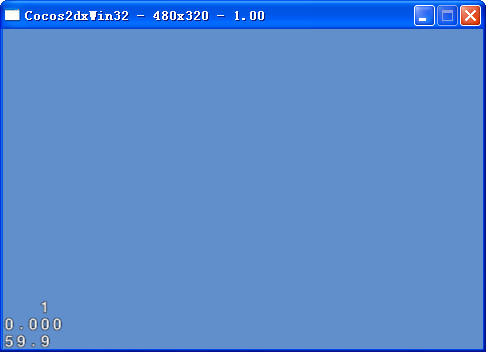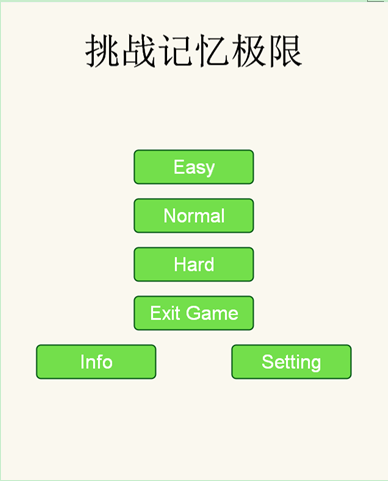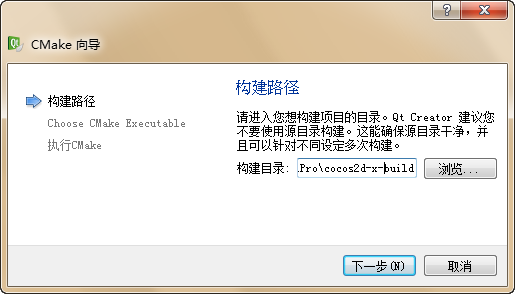转载请注明,原文地址:http://blog.csdn.net/jinble03/article/details/20006407
引言:如果你想深入了解cocos2d-x的整个框架和运行流程,如果你想知道整个启动过程的细节,如果你想知道自己写的代码是在什么时候和在哪里被调用的,下面可以为你解答其中奥秘。 对象:适合刚刚入门了cocos2d-x的初学者,编写并运行过简单的demo,并且想仔细探究其中的原理机制。1、程序入口main.cpp
|
|
int
APIENTRY _tWinMain(HINSTANCE hInstance,
HINSTANCE hPrevInstance,
LPTSTR lpCmdLine,
int
nCmdShow)
{
...
AppDelegate app;
...
returnCCApplication::sharedApplication()->run();
}
|
以上两行是关键代码 (1)代码AppDelegate app;调用了AppDelegate的构造函数,而它的父类是CCApplication,所以CCApplication的构造函数也被调用了
|
|
CCApplication::CCApplication()
: m_hInstance(NULL)
,m_hAccelTable(NULL)
{
m_hInstance = GetModuleHandle(NULL);
m_nAnimationInterval.QuadPart =
0
;
CC_ASSERT(! sm_pSharedApplication);
sm_pSharedApplication =
this
;
}
|
这里完成了AppDelegate和CCApplication之间的联系,由于AppDelegate是CCApplication的子类,故CCApplication里面的静态单例指针指的便是AppDelegate的实例。之后调用CCApplication::sharedApplication()的相关操作是基于AppDelegate的实现。 (2)代码CCApplication::sharedApplication()->run();调用了下面的代码
|
|
int
CCApplication::run()
{
...
if
(!applicationDidFinishLaunching())
{
return
0
;
}
..
while
(
1
)
{
if
(! PeekMessage(&msg,NULL,
0
,PM_REMOVE))
{
QueryPerformanceCounter(&nNow);
if
(nNow.QuadPart - nLast.QuadPart > m_nAnimationInterval.QuadPart)
{
nLast.QuadPart = nNow.QuadPart;
CCDirector::sharedDirector()->mainLoop();
}
else
{
Sleep(
0
);
}
continue
;
}
if
(WM_QUIT == msg.message)
{
break
;
}
if
(! m_hAccelTable || ! TranslateAccelerator(msg.hwnd,m_hAccelTable,&msg))
{
TranslateMessage(&msg);
DispatchMessage(&msg);
}
}
return
(
int
) msg.wParam;
}
|
在这里,run()函数里面是一个while死循环,不过里面有判断条件 if (WM_QUIT == msg.message)可以跳出循环,终止程序。循环里面每隔一段时间m_nAnimationInterval就调用CCDirector::sharedDirector()->mainLoop(),完成游戏的刷新。 (3)下面来看看mainLoop()都干了啥事:
|
|
void
CCDisplayLinkDirector::mainLoop(
void
)
{
if
(m_bPurgeDirecotorInNextLoop)
{
m_bPurgeDirecotorInNextLoop =
false
;
purgeDirector();
}
else
if
(! m_bInvalid)
{
drawScene();
CCPoolManager::sharedPoolManager()->pop();
}
}
|
首先解释一下为什么显示的是CCDisplayLinkDirector::mainLoop,而不是 CCDirector ::mainLoop,答案就在CCDirector.h头文件里面
|
|
class
CC_DLL CCDirector :
public
CCObject,
public
TypeInfo
{
.......
virtualvoid mainLoop(void) =0;
.......
}
class
CCDisplayLinkDirector :
public
CCDirector
{
..........
}
|
在CCDirector类里面,mainLoop是纯虚函数,而CCDisplayLinkDirector是CCDirector的子类。 重新回到mainLoop函数的实现,我们发现drawScene()和CCPoolManager::sharedPoolManager()->pop()是其主要内容,也就是重绘和释放自动内存池管理器里面暂时存储的对象,这个和cocos2d-x的自动内存管理机制有关,所有静态创建对象函数::create()都采用了自动托管机制,比如:
|
|
CCSprite* CCSprite::create(
const
char
*pszFileName)
{
CCSprite *pobSprite =
new
CCSprite();
if
(pobSprite && pobSprite->initWithFile(pszFileName))
{
pobSprite->autorelease();
return
pobSprite;
}
CC_SAFE_DELETE(pobSprite);
return
NULL;
}
|
其中autorelease()函数实现如下
|
|
CCObject* CCObject::autorelease(
void
)
{
CCPoolManager::sharedPoolManager()->addObject(
this
);
return
this
;
}
|
由此可以看到自动内存管理对象在每帧绘制结束后都会被CCPoolManager::sharedPoolManager()->pop()释放,除非我们在create()对象后使用了retain(),retain()也很简单,实现如下
|
|
void
CCObject::retain(
void
)
{
CCAssert(m_uReference >
0
,
"reference count should greater than 0"
);
++m_uReference;
}
|
就是把对象的引用计数-1,这又对应于对象的release()函数
|
|
void
CCObject::release(
void
)
{
CCAssert(m_uReference >
0
,
"reference count should greater than 0"
);
--m_uReference;
if(m_uReference == 0)
{
delete
this
;
}
}
|
可以看到,对象只有当其引用计数m_uReference=0时,才会真正被删除。 (4)下面看看drawScene()重绘函数负责什么,看完你就全明白了整个框架了
|
|
void
CCDirector::drawScene(
void
)
{
..............
if
(! m_bPaused)
{
m_pScheduler->update(m_fDeltaTime);
}
.....................
if
(m_pRunningScene)
{
m_pRunningScene->visit();
}
.....................
if
(m_pobOpenGLView)
{
m_pobOpenGLView->swapBuffers();
}
................
}
|
大家看到 m_pScheduler->update(m_fDeltaTime)会不会想到我们经常在HelloWorldScene.h写的void update(float dt),两者有什么关系呢? 首先回忆一下,我们在HelloWorldScene.h里面是怎样调用到update函数的this->schedule(schedule_selector( HelloWorld::update));(这只是调用方式的一种) 看看schedule函数的实现
|
|
void
CCNode::schedule(SEL_SCHEDULE selector)
{
this
->schedule(selector,
0
.0f,kCCRepeatForever,
0
.0f);
}
void
CCNode::schedule(SEL_SCHEDULE selector,
float
interval,unsigned
int
repeat,
float
delay)
{
CCAssert( selector,
"Argument must be non-nil"
);
CCAssert( interval >=
0
,
"Argument must be positive"
);
m_pScheduler->scheduleSelector(selector,this,interval,repeat,delay,!m_bRunning);
}
class
CC_DLL CCNode :
public
CCObject
{ .........
CCScheduler *m_pScheduler;
.......
}
|
再对比一下刚才drawScene()重绘函数
|
|
void
CCDirector::drawScene(
void
)
{
..............
if
(! m_bPaused)
{
m_pScheduler->update(m_fDeltaTime);
}
.....................
}
class
CC_DLL CCDirector :
public
CCObject,
public
TypeInfo
{ ...............
CC_PROPERTY(CCScheduler*,m_pScheduler,Scheduler);
..............
}
#define CC_PROPERTY(varType,varName,funName)\
protected
: varType varName;\
public
: virtual varType get##funName(
void
);\
public
: virtual
void
set##funName(varType var);
|
我们发现CCNode和CCDirector类都申明了CCScheduler *m_pScheduler,都不是同一个滴。 且慢,不一定哦,看看CCNode的构造函数先
|
|
CCNode::CCNode(
void
)
: ...........
{
CCDirector *director = CCDirector::sharedDirector();
...............
m_pScheduler = director->getScheduler();
................
}
|
原来CCNode里面的m_pScheduler引用了CCDirector的m_pScheduler,感受到穷追不舍的魅力了吧。 再回到之前的问题:CCDirector::drawScene里面的m_pScheduler->update(m_fDeltaTime)和我们经常在HelloWorldScene.h写的void update(float dt),两者有什么关系呢? 由上面代码可见,this->schedule(schedule_selector( HelloWorld::update))实际上会把schedule_selector( HelloWorld::update)保存到CCNode里面的m_pScheduler,也就是CCDirector里面的m_pScheduler,那么CCDirector::drawScene里面的m_pScheduler->update(m_fDeltaTime)里面的代码应该就和HelloWorld::update()有关吧。继续看看呗。
|
|
void
CCScheduler::update(
float
dt)
{
................
for
(tHashTimerEntry *elt = m_pHashForTimers; elt != NULL; )
{
m_pCurrentTarget = elt;
m_bCurrentTargetSalvaged =
false
;
if
(! m_pCurrentTarget->paused)
{
for
(elt->timerIndex =
0
; elt->timerIndex < elt->timers->num; ++(elt->timerIndex))
{
elt->currentTimer = (CCTimer*)(elt->timers->arr[elt->timerIndex]);
elt->currentTimerSalvaged =
false
;
elt->currentTimer->update(dt);
......................
}
}
..................
}
...............
}
|
重点看elt->currentTimer->update(dt); elt->currentTimer是CCTimer类,看看里面的update函数是神马情况先
|
|
void
CCTimer::update(
float
dt)
{
if
(m_fElapsed == -
1
)
{
....................
}
else
{
if
(m_bRunForever && !m_bUseDelay)
{
...................
if
(m_fElapsed >= m_fInterval)
{
if
(m_pTarget && m_pfnSelector)
{
(m_pTarget->*m_pfnSelector)(m_fElapsed);
}
...................
}
}
else
{
...............
if
(m_bUseDelay)
{
if
( m_fElapsed >= m_fDelay )
{
if
(m_pTarget && m_pfnSelector)
{
(m_pTarget->*m_pfnSelector)(m_fElapsed);
}
...............
}
}
else
{
if
(m_fElapsed >= m_fInterval)
{
if
(m_pTarget && m_pfnSelector)
{
(m_pTarget->*m_pfnSelector)(m_fElapsed);
}
.......................
}
}
..............
}
}
}
|
你可能还不知道(m_pTarget->*m_pfnSelector)(m_fElapsed);这个什么意思,没事,重新看看HelloWorldScene.h调用update函数时的代码:this->schedule(schedule_selector( HelloWorld::update));下面是schedule的实现(上面已提过)
|
|
void
CCNode::schedule(SEL_SCHEDULE selector)
{
this
->schedule(selector,!m_bRunning);
}
|
最后一步,就是看m_pScheduler->scheduleSelector(selector,this,!m_bRunning)和(m_pTarget->*m_pfnSelector)(m_fElapsed)有什么关系,其中selector是函数指针,指向HelloWorld::update,不懂的可以看schedule_selector的定义。 下面是scheduleSelector函数的实现
|
|
void
CCScheduler::scheduleSelector(SEL_SCHEDULE pfnSelector,CCObject *pTarget,
float
fInterval,unsigned
int
repeat,
float
delay,bool bPaused)
{
................
tHashTimerEntry *pElement = NULL;
HASH_FIND_INT(m_pHashForTimers,&pTarget,pElement);
if
(! pElement)
{
...........................
}
else
{
CCAssert(pElement->paused == bPaused,
""
);
}
if
(pElement->timers == NULL)
{
pElement->timers = ccArrayNew(
10
);
}
else
{
....................
}
CCTimer *pTimer =
new
CCTimer();
pTimer->initWithTarget(pTarget,pfnSelector,fInterval,delay);
ccArrayAppendObject(pElement->timers,pTimer);
pTimer->release();
}
|
重点看pTimer->initWithTarget(pTarget,delay),其中pTarget就是CCNode(对应HelloWorld类)对象本身,而pfnSelector就是刚才说的函数指针,指向HelloWorld::update,下面是initWithTarget的函数实现
|
|
bool CCTimer::initWithTarget(CCObject *pTarget,SEL_SCHEDULE pfnSelector,
float
fSeconds,unsigned
int
nRepeat,
float
fDelay)
{
m_pTarget = pTarget;
m_pfnSelector = pfnSelector;
.....................
return
true
;
}
|
由此,我们解决刚才提出的问题: 看看m_pScheduler->scheduleSelector(selector,!m_bRunning)和(m_pTarget->*m_pfnSelector)(m_fElapsed)有什么关系,其中selector是函数指针,指向HelloWorld::update。 答案就在上面,再次啰嗦说明一下,pTarget就是CCNode(对应HelloWorld类)对象本身,而pfnSelector就是刚才说的函数指针,指向HelloWorld::update,也就是说,HelloWorld类定义的void update(float dt)被调用了,而且是在整个主循环里面CCDirector::sharedDirector()->mainLoop()。 (5)结束语: 整个cocos2d-x的框架
源码就是这样,具体一些细节还未涉及,但我们已经理解程序一开始从main函数,然后怎么样一步步调用到我们自己是HelloWorld.h里面自己定义实现的函数,特别是update函数,同时也了解了cocos2d-x的一些内存管理机制和回调机制,也在这个框架代码里面,还有整个框架是怎么实现帧数控制的。 用《一代宗师》里面的一句话来概括这次框架源码研读之旅吧——”念念不忘,必有回响“




